Learning the numbers and performing mathematical operations with the help of dominoes! [ESP – ENG]
Español
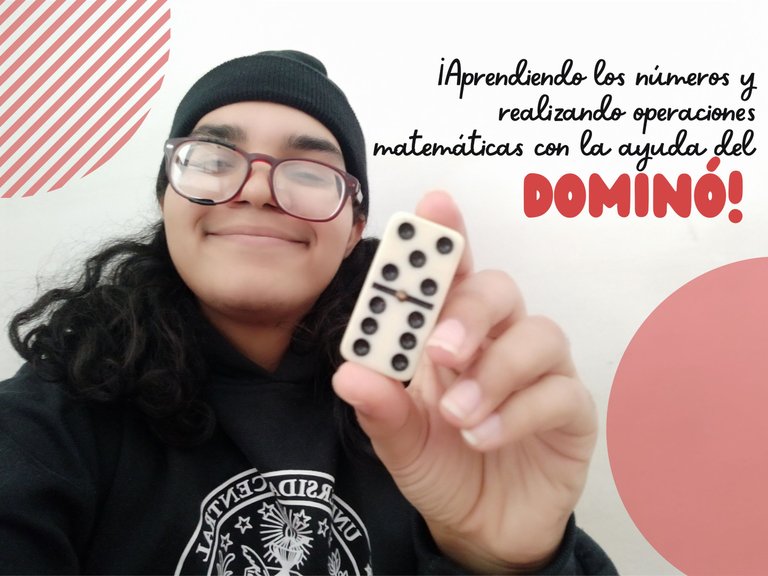
Saludos a todos los miembros de la comunidad, ¿cómo se encuentran? Cuando estamos intentando enseñar a niños puede que nos encontremos con la eterna problemática de la atención, pues aunque muchos no lo crean, este es un público difícil debido a que quiere actividades que se sientan como si estuviesen jugando. Por ello, en esta oportunidad les he querido compartir esta dinámica en donde utilizando fichas de dominó los pequeños no sólo pueden aprender los números sino también a realizar operaciones matemáticas. Hay múltiples variaciones que podemos emplear dependiendo de las necesidades que se tengan, sin embargo, voy a reflejar aquellas que para mí son las principales. En esencia, lo único que se necesitan son fichas de dominó, pero por cuestión de generar un registro del aprendizaje del niño, puede añadírsele una hoja de papel y un lápiz para que este escriba los resultados de los ejercicios.
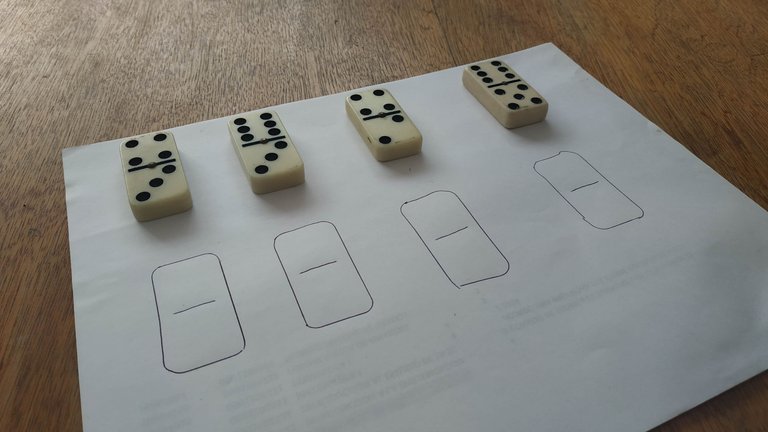
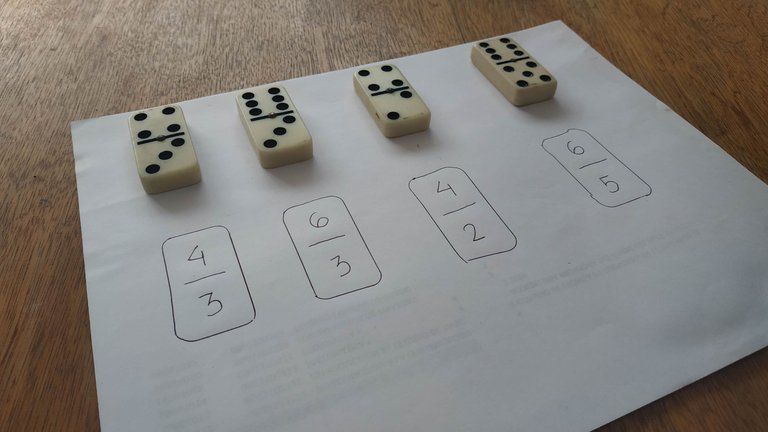
Empezando desde lo más sencillo para esos niños que están aprendiéndose los números, se les puede asignar una cantidad determinada de fichas de dominó que estos deberán de visualizar y analizar de manera que sean capaces de identificar cuáles son esos números que se encuentran reflejados en ellas. Esta es una excelente alternativa puesto que como en su mayoría las fichas de dominó vienen con textura, dígase, los hoyos de los números y la división en el medio, llama mucho la atención de los niños que a veces empiezan a contar de uno en uno sintiendo con sus manos las fichas de dominó, volviéndose así una experiencia completa. Pueden hacerse las figuras en la hoja de papel simulando la ficha de dominó pero en blanco sin ningún número, de forma que sean los niños quienes sean los encargados de colocar el número correspondiente según se les vayan presentando las fichas de dominó.
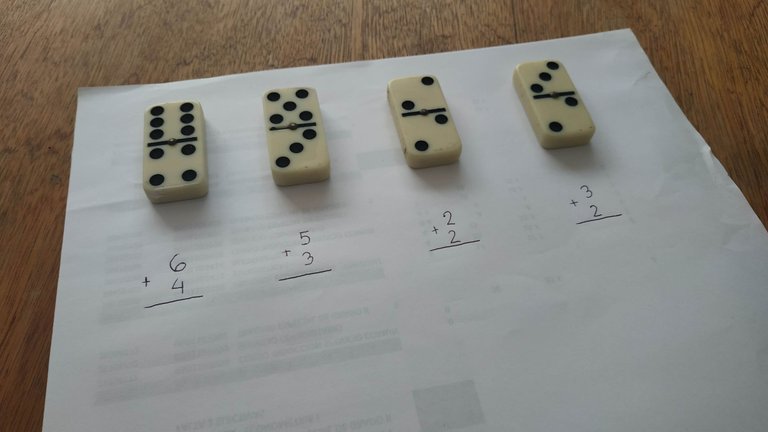
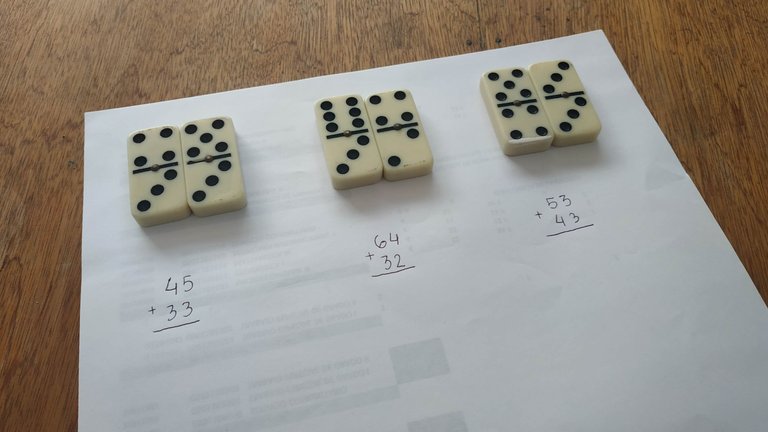
¡Ahora con suma y resta! Siguiendo la misma línea que en el ejercicio anterior, se puede realizar de dos manera tomando en consideración el nivel en el que se encuentre el niño, en el sentido de que si este solamente sabe hacer estas operaciones matemática con un múltiplo pues se utilizará solamente una ficha de dominó, mientras que si está dentro de sus capacidades realizarlas con dos múltiplos podrían usarse dos fichas de dominó. Para la forma en la que se ordenarán los números que conformarán las cantidades no debería existir mayores complicaciones ya que uno de los puntos fuertes de esta dinámica es su flexibilidad, adaptándose a las necesidades de cada quien. Si quiere que las operaciones matemáticas sean más difíciles, se le pueden añadir fichas de dominó al ejercicio, así se forman cantidades de mayor denominación. En este caso, lo que hago es colocar dichas fichas en una línea para no confundir demás al niño.
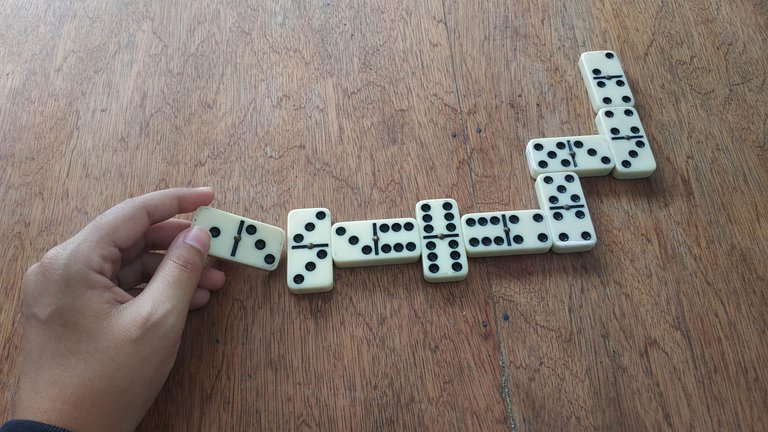
En el caso de las multiplicaciones y divisiones es lo mismo, pero mi opinión personal es que cada dinámica tiene su promedio de edad, cuando los niños llegan al punto de estas operaciones matemáticas pues pueden implementarse otras que compaginen mejor que usando fichas de dominó. Sería quizás una mejor idea iniciarlos propiamente en el juego de dominó que es de mucha ayuda para comenzar a desarrollar habilidades matemáticas como las relacionadas a la estadística, además de que no está mal que aprendan de igual manera a pensar de una forma lógica a través de los juegos, porque hay que trabajar la mente llevando esos conocimientos aprendidos a aplicaciones prácticas no relacionadas directamente con el aprendizaje, a final de cuentas se supone que aprendemos esto para usarlo en la vida cotidiana y ¿qué mejor que un juego para un niño que lo que quiere en el fondo es jugar?
Muchas gracias por haber llegado hasta acá, espero que estén bien.
Las fotos son mías tomadas de mi teléfono Redmi Note 5 y la portada fue editada usando la página de Canva.
English
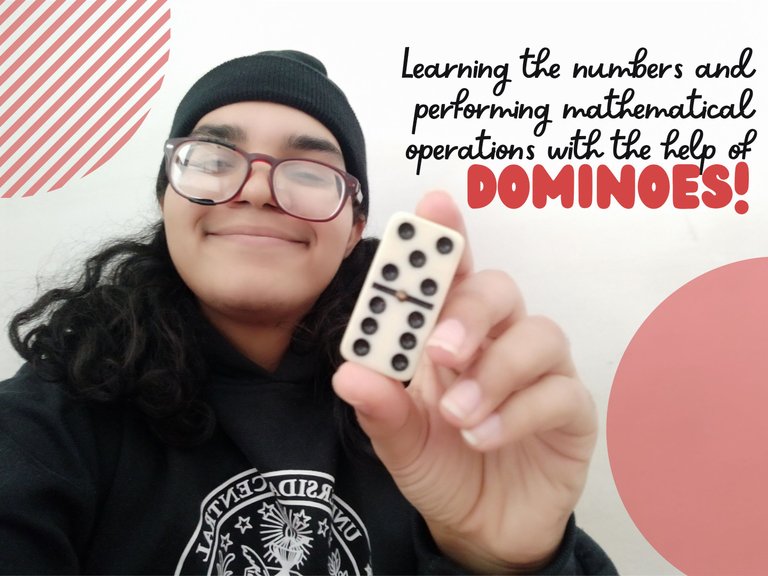
Greetings to all members of the community, how are you? When we are trying to teach children we may encounter the eternal problem of attention, because although many do not believe it, this is a difficult audience because they want activities that make them feel as if they were playing. For this reason, in this opportunity I wanted to share with you this dynamic where using dominoes the little ones can not only learn numbers but also to perform mathematical operations. There are multiple variations that we can use depending on the needs we have, however, I am going to reflect those that for me are the main ones. In essence, all that is needed are dominoes, but for the purpose of generating a record of the child's learning, a sheet of paper and a pencil can be added so that the child can write down the results of the exercises.


Starting from the simplest for those children who are learning the numbers, you can assign them a certain amount of dominoes that they must visualize and analyze so that they are able to identify what are those numbers that are reflected in them. This is an excellent alternative since most of the dominoes come with texture, i.e., the holes of the numbers and the division in the middle, it attracts the attention of the children who sometimes begin to count one at a time by feeling the dominoes with their hands, thus becoming a complete experience. The figures can be made on the sheet of paper simulating the dominoes but blank without any number, so that the children are the ones who are responsible for placing the corresponding number as they are presented with the dominoes.


Now with addition and subtraction! Following the same line as in the previous exercise, it can be done in two ways taking into consideration the level in which the child is, in the sense that if he/she only knows how to do these mathematical operations with a multiple, only one domino will be used, while if it is within his/her capabilities to do them with two multiples, two dominoes could be used. For the way in which the numbers that will make up the quantities will be ordered, there should be no major complications, since one of the strengths of this dynamic is its flexibility, adapting to the needs of each person. If you want the mathematical operations to be more difficult, you can add dominoes to the exercise, thus forming larger denomination quantities. In this case, what I do is to place the dominoes in a line so as not to confuse the child.

In the case of multiplications and divisions is the same, but my personal opinion is that each dynamic has its average age, when children reach the point of these mathematical operations can be implemented others that combine better than using dominoes. It would be perhaps a better idea to initiate them properly in the domino game that is very helpful to begin to develop mathematical skills such as those related to statistics, besides it is not bad that they also learn to think in a logical way through games, because you have to work the mind taking that knowledge learned to practical applications not directly related to learning, after all we are supposed to learn this to use it in everyday life and what better than a game for a child that what he wants deep down is to play?
Thank you very much for having come this far, I hope you are well.
The photos are mine taken from my Redmi Note 5 phone and the cover was edited using Canva.
The first thing that made me click to read was your heading and I was not disappointed. I used to struggle with teaching children. This is a brilliant way to grab the attention of little ones. How did you come about this method?
Thank you! I'm so glad you liked it. This is a method that my mom taught me some time ago and that she actually used with me when I was little, she has always been that kind of person who tries to make everything as entertaining as possible in all aspects, even teaching.
We use it with young children who are being integrated to school, generally the only thing they want to do is play and we have to find ways to make them pay attention to what we want to teach them. However, there are times when they do not want to follow the instructions and it is just as complicated even when using dynamics, but we try.
Hope you are well, I appreciate the comment.
I love when we can use and combine Simple but practical ideas, like yours here.
Glad you liked it! Sometimes simple ideas that serve the purpose are the best, it saves time and works great for teaching kids anyway.
Agree!
Congratulations your publication has been chosen among the best of the day.
KEEP CREATING GOOD CONTENT.
Thank you very much! I really appreciate the support.
Hola amiga, muy buen juego didáctico y mas que un juego didáctico una estrategia para enseñar las operaciones matemáticas. Me encanto, no solamente jugar el domino sino a jugarlo de otra manera.
This is beautiful 😍 I have now learnt a new method.
Thanks!